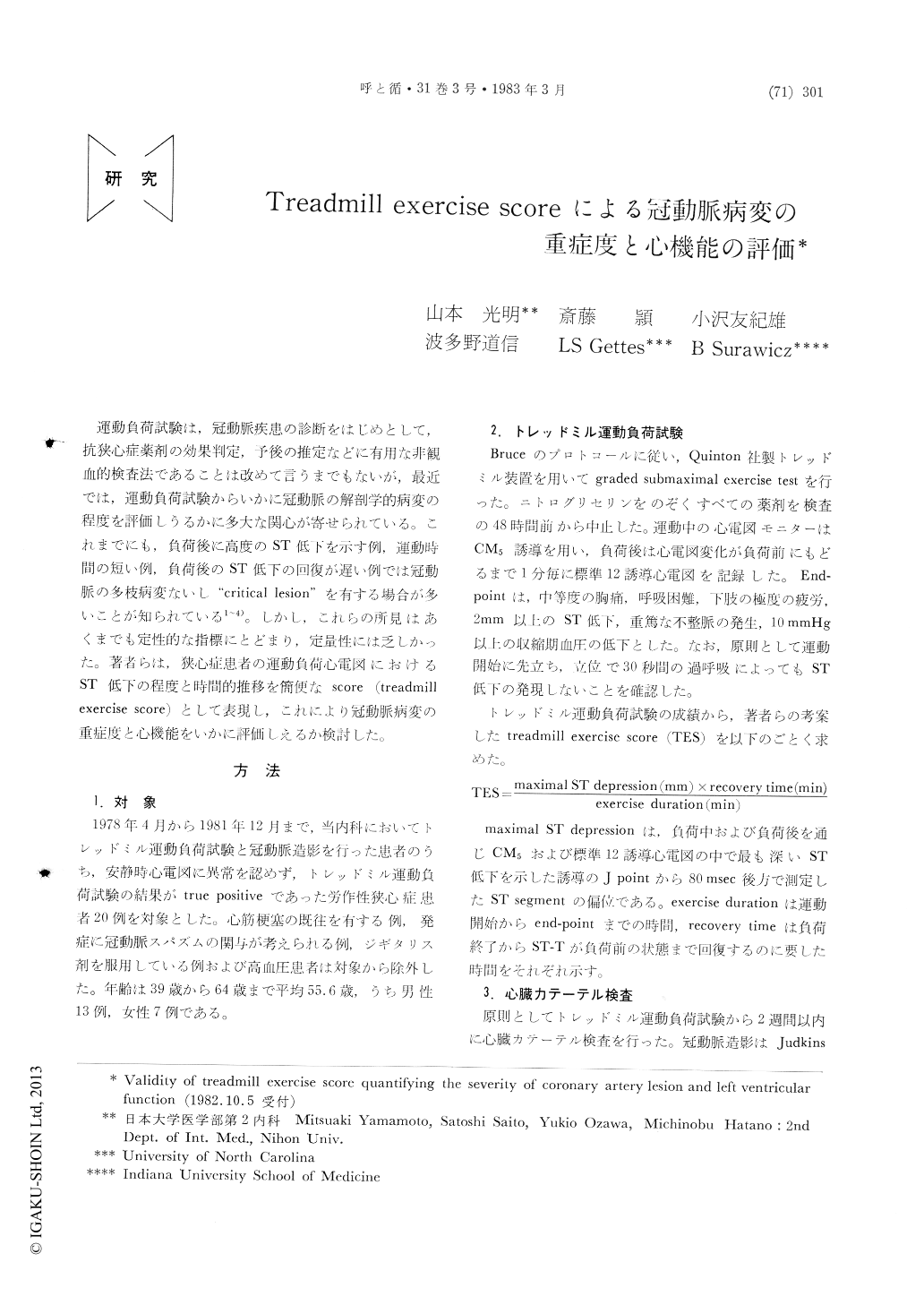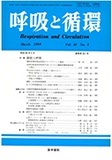Japanese
English
- 有料閲覧
- Abstract 文献概要
- 1ページ目 Look Inside
運動負荷試験は,冠動脈疾患の診断をはじめとして,抗狭心症薬剤の効果判定,予後の推定などに有用な非観血的検査法であることは改めて言うまでもないが,最近では,運動負荷試験からいかに冠動脈の解剖学的病変の程度を評価しうるかに多大な関心が寄せられている。これまでにも,負荷後に高度のST低下を示す例,運動時間の短い例,負荷後のST低下の回復が遅い例では冠動脈の多枝病変ないし"critical lesion"を有する場合が多いことが知られている1〜4)。しかし,これらの所見はあくまでも定性的な指標にとどまり,定量性には乏しかった。著者らは,狭心症患者の運動負荷心電図におけるST低下の程度と時間的推移を簡便なscore (treadmill exercise score)として表現し,これにより冠動脈病変の重症度と心機能をいかに評価しえるか検討した。
In this study, we have developed a treadmill exercise score (TES) that grades the ST-segment response to exercise. Instead of using a single value for peak ST depression, TES reflects not only the depth of ST depression but the time course by which ST changes develop and resolve. Thus, TES is expressed as follows ; TES = maximal ST depression (mm) xrecovery time (min) _______________________________________________ exercise duration (min) Correlation of TES with severity of coronary artery disease and left ventricular function was analyzed in 20 patients with effort angina having treadmill exercise testing and coronary angiography.

Copyright © 1983, Igaku-Shoin Ltd. All rights reserved.


